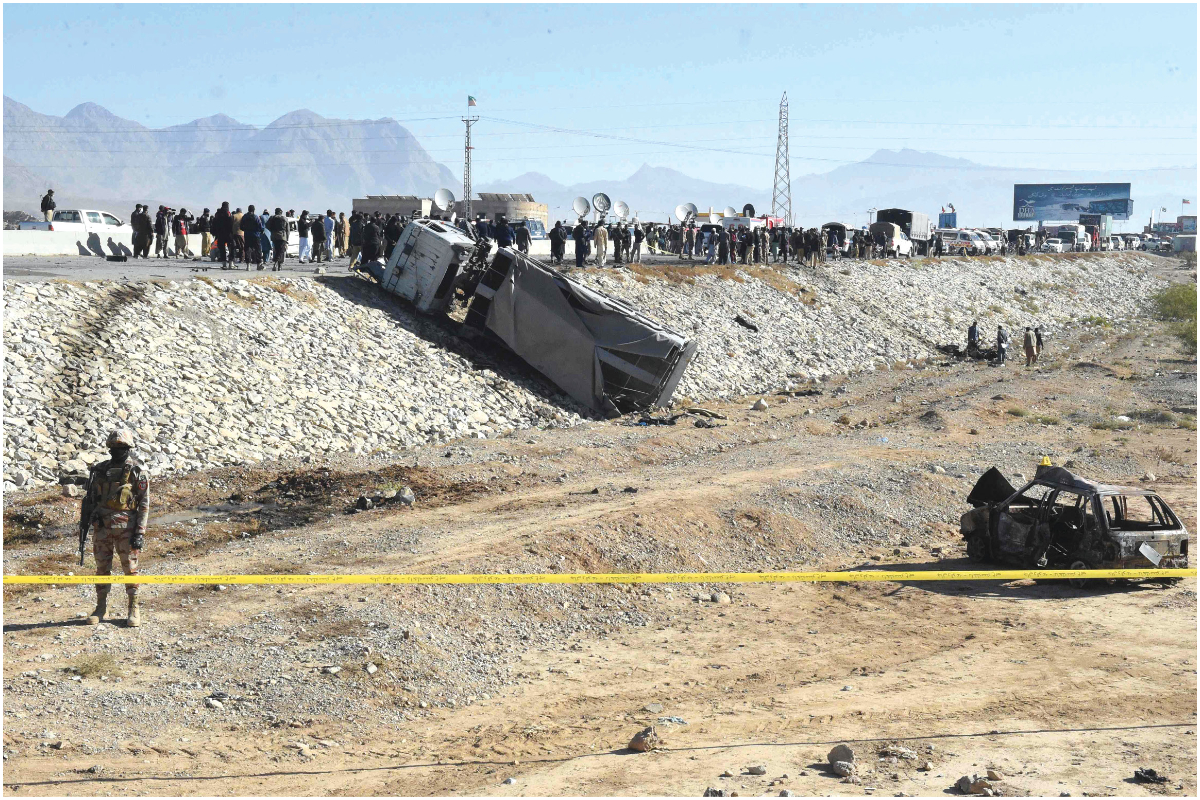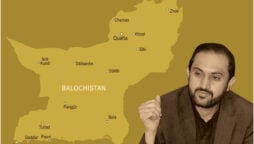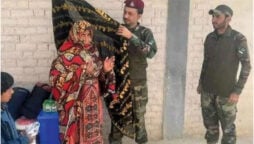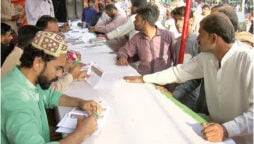
The Real Threat
Terrorist activities likely to surge following the TTP’s decision to end the ceasefire
Last week, the Tehreek-e-Taliban Pakistan (TTP) ended the ceasefire they had announced in June this year. In a statement, the TTP conveyed instructions to its members that “since military operations by the Pakistani security forces are ongoing against mujahideen in different areas… it is imperative for you to carry out attacks wherever you can in the entire country.” It contended that the TTP had repeatedly cautioned Pakistani authorities not to sabotage the negotiation process “but the (Pakistani) army and intelligence agencies did not stop and continued the attacks… now our retaliatory attacks will also start across the country.”
This adds to Pakistan’s challenges, including uncertain security and economic conditions along with a deepening political crisis. Though the ceasefire was in place for the past few months, the attacks by various factions of the TTP inside Pakistan had continued sporadically causing casualties of the security personnel as well as civilians. The TTP’s announcement coincided with two important developments – the change of army command in Pakistan and the visit of Minister of State for Foreign Affairs Hina Rabbani Khar to Kabul on 29 November.
Within just 24 hours of ending the ceasefire, the TTP carried out a major terrorist attack against a police contingent near Quetta, killing four policemen and injuring more than a dozen people. Obviously, the law enforcement as well as the intelligence and security agencies dealing with such issues have a tough challenge at their hands.
The TTP’s evolution over the past one-and-a-half decade indicates that the group has been tailored to be a long-term threat to Pakistan’s state and society. The three central goals of the TTP since its formation have been:
(1) Enforcement of Islamic Shariah in Pakistan.
(2) Supporting the Afghan Taliban in their ‘jihad’ against US and NATO forces until they were present in Afghanistan, and now consolidating the Afghan Taliban rule in the war-torn country.
(3) And undertake the so-called ‘jihad’ against the Pakistani security forces for achieving its objectives.
The TTP from the beginning nurtured close linkages with the Afghan Taliban as well as terrorist groups like Al-Qaeda and recently with Daesh, too, for achieving its goals.
It’s an interesting fact that the TTP’s formation in 2007 was at a time when the Afghan Taliban insurgency was receiving momentum against the US and NATO forces. The then Afghan intelligence Agency NDS and its many Western and Indian supporters, who blamed Pakistan for a “double game,” moved forward to not only use the the TTP as an antidote to counter perceived support to the Afghan Taliban by Pakistan but also entangle Pakistan into a long term militancy centered conflict not limited to just the porous border of Pakistan-Afghanistan. That’s why since then TTP’s strength and funding continued to grow despite the robust military operations against it. In recent years, the TTP’s backers and financiers have ensured that the group’s commanders cultivate and deepen ideological and familial linkages with the Afghan Taliban. The TTP’s leaders have continued to demonstrate allegiance to the Afghan Taliban’s founder Mullah Muhammad Omar and his successors.
After the fall of Kabul on August 15, 2021 and restoration of the Islamic Emirate of Afghanistan (IEA), it came as a surprise to the Pakistani authorities when the TTP Ameer, Noor Wali Mehsud, publicly announced renewal of group’s allegiance to the IEA’s Ameerul Momineen, Mullah Haibatullah Akhundzada. A militant group with its origin in Pakistan reaffirming its allegiance to the Shariah-based regime in a neighbouring country was a clear indication of the agenda and intentions of the group to undertake resistance or subversive activities in Pakistan.
On their part, the Afghan Taliban have continued to publicly reaffirm their commitment to not allow their soil to be used for terrorism against any other country. Specifically on sanctuaries of TTP militants in Afghanistan, their position is that these are displaced Pakistanis and that Pakistan should address their issues through dialogue. The Afghan Taliban have also been reassuring Pakistan’s interlocutors that they would take all possible actions to address the TTP issue for Pakistan, but this requires time and patience. However, the talks mediated by the Afghan Taliban between Pakistan and the TTP in the past few months remained intermittent and did not yield a clear understanding.
The matter must have been raised by the Minister of State for Foreign Affairs Hina Rabbani Khar, who visited Kabul on November 29, to renew bilateral engagements after a hiatus of several months. However, any concrete actions by the Afghan Taliban to stop the TTP’s support not only depends upon the environment of bilateral institutional interaction between the two sides in the coming months and years, but also how the Afghan interim government’s interaction with the international community shapes up. Unfortunately, progress on both these counts has not been really promising.
In the current scenario, Pakistan’s TTP threat seems to be getting more potent and complex. It has been established that the group’s linkages with the Afghan Taliban remain firm and active. After the withdrawal of the US-led NATO troops from Afghanistan, the Washington is focusing on a Counter-Terrorism (CT) strategy to combat any threat that could arise for the US homeland or for international peace and security. A CT-centered campaign could mean increased instability in Afghanistan particularly bordering areas with Pakistan. Afghanistan’s increasing political and economic isolation due to the Afghan Taliban’s rigid stance on human rights and inclusivity may further aggravate the turmoil in Afghanistan in the coming years. This would provide breeding ground for terrorist groups like the TTP, the Daesh, the ETIM and the IMU to strengthen their bases and nexus in Afghanistan. If things continue on this course, the Afghan Taliban’s limitations to take any meaningful action against terrorist sanctuaries in Afghanistan will only magnify.
In view of the complexity of the threat, it is important that Pakistan’s strategy to counter the TTP threat should be comprehensive and multi-dimensional. It should combine a robust security approach of effectively combating the TTP fighters and their support networks with a skillful and deft political approach of having talks when and where possible but with the proviso that agenda does not compromise Pakistan’s sovereignty and vital national interests. A social and economic reintegration model should be offered to those who are ready to abandon militancy and accept state sovereignty.
Since TTP’s sanctuaries are in Afghanistan, relations with and pressure on the Afghan interim government are important. Unfortunately, during the current year the bilateral interaction in political, economic and people-to-people exchanges has not advanced in accordance with the potential of the relationship and the trust deficit continues to prevail in many areas. The mechanisms like APAPPS agreed with the previous regimes may not be workable with the Afghan interim government; new ones should be devised to address the needs of bilateral relations. A conducive environment for bilateral interaction can provide ground for deepening institutional cooperation to combat terrorism particularly when Afghanistan itself is faced with regular attacks by terrorists especially Daesh (on November 29, a madrassah in the Afghan province of Samangan was also attacked by terrorists killing 19 students).
Another important dimension of the TTP threat is that its actions in the past as well as today have brought great suffering and hardship to the tribal people of Pakistan and Afghanistan. Interaction with these tribal people indicates that they are against any new wave of violence and terrorism that brings disruptions to their lives after being through four decades of militancy, starting from jihad against the Soviet occupation. The tribes should be involved in peace initiatives particularly in conveying a clear message to the TTP that violence will not be tolerated. This kind of approach should also be supported by governments of Pakistan and Afghanistan for creating a facilitative environment for movement of tribal people and local trade across the border.
Pakistan’s detractors would do everything to prolong the TTP threat and increase its temperature for the country. A strong, innovative and multi-dimensional approach should be adopted to deal with this threat.
Catch all the National Nerve News, Breaking News Event and Latest News Updates on The BOL News
Download The BOL News App to get the Daily News Update & Live News.












 Read the complete story text.
Read the complete story text. Listen to audio of the story.
Listen to audio of the story.